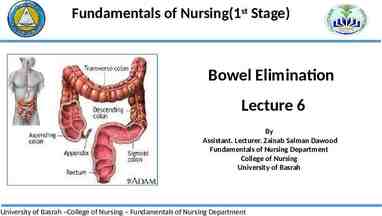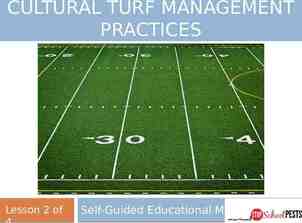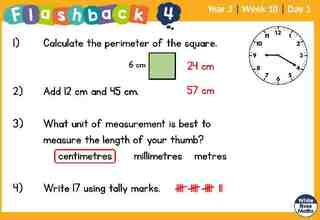MUSCLE TESTING
43 Slides2.04 MB

MUSCLE TESTING

Manual muscle testing is a functional neuromuscular assessment tool and should be considered an indispensable component of a modern clinical examination.

Dart notes that Douglas " . . . claimed: (1)that the primary function of muscle is the 'relationing' of the various parts of the body to one another; (2) that their function as movers of body-parts upon body-parts is secondary; (3) that, of such 'relationing' in the body, the head-neck relation, brought about by the suboccipital group of muscles (atlas-occipital, axisoccipital, atlas-axis), is of paramount importance, and that it is worthy of the distinction of being recognized as 'the primary relation upon which all more ultimate relations depend.' " (Emphasis added.)

Usually, it is not the loss of strength in a muscle that is most important, but a degrading of normal neuromuscular function both within and between individual muscles that is responsible for the greatest number of disturbances.

First address the cause, as the improper repetitive movement patterns. S McGill

A reorganized motor control system is a key factor in musculoskeletal pain conditions, and its relevance in the transition from acute pain to chronic pain is most likely underestimated. The interaction between muscle pain and motor control depends on the specific motor task.

PAIN ALTERS MOVEMENT

Rotator Cuff Testing Differentiation between rotator cuff tendinitis, bursitis, or a torn rotator cuff (weakness on motor testing) often is aided by a lidocaine test. Injection of lido caine into the subacromial bursa often improves the pa tient's pain and allows better assessment of true motor strength (now not limited by pain). Clinical Orthopaedic Rehabilitation / editor, S. Brent Brotzman, Kevin E. Wilk.-2nd ed

Musculoskeletal pain potentially produces many changes in motor activity. Some of these changes can be explained by peripheral mechanisms in the muscles themselves and by mechanisms within the central nervous system. Certainly, pain has a potent effect on motor activity and control. The dysfunction that occurs in the neuromuscular system in the presence of pain is extremely complex. In addition to the more obvious changes, such as increased muscle activity in some muscle groups, and inhibition of others, more subtle anomalous patterns of neuromuscular activation seem to occur . Loss of selective activation and inhibition of certain muscles that perform key synergistic functions, leading to altered patterns of neuromuscular activation, and the ensuing loss of joint stability and control, are initiated with acute pain and tissue injury. However, these phenomena persist into the period of chronicity and could be one reason for ongoing symptoms. Sterling et al (2001)

http://www.dynamicchiropractic.ca/mpacms/dc/article.php?id 54578 Dynamic Chiropractic – March 26, 2010, Vol. 28, Issue 07 Muscle Imbalance: The Goodheart and Janda Models By Scott Cuthbert, DC The Muscle Test Handbook Functional Assessment, Myofascial Trigger Points and Meridian Relationships Hans Garten MD DIBAK DACNB DO (DAAO) FACFN GUEST EDITOR FOR THE INTERNATIONAL EDITION Joseph Shafer DC CCSP DIBAK

For efficient muscle strength testing it is necessary to ensure that: the patient builds force slowly after engaging the barrier of resistance offered by the practitioner the patient uses maximum controlled effort to move in the prescribed direction the practitioner ensures that the point of muscle origin is efficiently stabilized care is taken to avoid use by the patient of ‘tricks’ in which synergists are recruited. Muscle strength is most usually graded as follows. Grade 5 is normal, demonstrating a complete (100%) range of movement against gravity, with firm resistance offered by the practitioner. Grade 4 is 75% efficiency in achieving range of motion against gravity with slight resistance. Grade 3 is 50% efficiency in achieving range of motion against gravity without resistance. Grade 2 is 25% efficiency in achieving range of motion with gravity eliminated. Grade 1 shows slight contractility without joint motion. Grade 0 shows no evidence of contractility.

Vladimir Janda’s Timeless Quotes and Concepts On movement and control: There are 2 main schools of thought in musculoskeletal medicine: Structural and Functional The sensorimotor system is one entity and cannot be functionally separated The unconscious reaction and speed of contraction are the most important for functional stability, not strength A muscle can be as strong as possible, but if it doesn’t fire at the right time, it’s useless

On pain and dysfunction Protective reflexes serve as the basis for all human movement and dominate in pathology Structural lesions rarely cause pain themselves; muscles are most often the cause of pain Often, the site of pain is not the cause of pain Altered peripheral input due to pain leads to changes in muscle activation, causing faulty movement patterns Defective motor learning prevents the motor system from properly reacting or adapting to different changes in the body Many signs and symptoms of impaired function have a hidden cause in an unrecognized dysfunction located elsewhere

On muscle imbalance Muscle imbalance is a systematic and predictable response of the motor system Muscles respond predictably to pain and pathology at peripheral joints Tonic muscles are prone to tightness and phasic muscles are prone to weakness Altered tension is the first response to nociception by the sensorimotor system. Typical muscle response to joint dysfunction is similar to spastic muscles in structural CNS lesions Tight muscles are readily activated during movement because of a lowered irritability threshold The presence of a “crossed syndrome” indicates the presence of CNS-mediated muscle imbalance

Tonic Muscles Prone to Tightness or Shortness Gastroc-Soleus, Tibialis Posterior, Hip Adductors, Hamstrings, Rectus Femoris, Iliopsoas, Tensor Fascia Lata, Piriformis, Thoraco-lumbar extensors, Quadratus Lumborum, Pectoralis Major, Upper Trapezius, Levator Scapulae, Scalenes, Sternocleidomastoid, Upper limb flexors

Phasic Muscles Prone to Weakness or Inhibition Peroneus Longus, Brevis Tibialis Anterior Vastus Medialis, Lateralis Gluteus Maximus, Medius, Minimus Rectus Abdominus Serratus Anterior Rhomboids Lower Trapezius Deep neck flexors Upper limb extensors

Some muscles may exhibit both tonic and phasic characteristics. It should also be noted that in addition to neurological predisposition to tightness or weakness, structural changes within the muscle also contribute to muscle imbalance. However, in chronic pain that is centralized within the CNS, patterns of muscle imbalance are often a result of neurological influence rather than structural changes.

Janda’s Crossed Syndromes Over time, these imbalances will spread throughout the muscular system in a predictable manner. Janda has classified these patterns as “Upper Crossed Syndrome” (UCS), “Lower Crossed Syndrome” (LCS), and “Layer Syndrome” (LS) (Janda, 1987, 1988). [UCS is also known as “cervical crossed syndrome”; LCS is also known as “pelvic crossed syndrome; and LS is also known as “stratification syndrome.”] Crossed syndromes are characterized by alternating sides of inhibition and facilitation in the upper quarter and lower quarter. Layer syndrome, essentially a combination of UCS and LCS is characterized by alternating patterns of tightness and weakness, indicating long-standing muscle imbalance pathology.

Upper and lower crossed syndromes Upper Crossed Syndrome Lower Crossed Syndrome Inhibited Deep cervical flexors Facilitated Upper Trap / Levator Scapula Suboccipitals Facilitated SCM / Pectoralis Inhibited Lower Trap / Serratus Ant. Lower / Middle Trap. Inhibited Abdominals Facilitated Thoraco-lumbar extensors Quadratus Lumborum Facilitated Rectus Femoris / Iliopsoas Inhibited Gluteus Min / Med/ Max Figure 1 : Janda's Muscle Imbalance Syndromes Upper Crossed Syndrome Lower Crossed Syndrome

5. Neck Flexion Endurance Purpose: To assess the endurance of the deep neck flexors (Rectus Capitus Anterior, Rectus Capitus Lateralis, Longus Capitus, Longus Colli - “Muscle specificity in tests of cervical flexor muscle performance”). Test Position: Supine, hooklying. Performing the Test: Tuck patients chin in and lift off table 1 inch. The examiner looks for substitution of the platysma or SCM muscle. Normal Values: Men: 38.9 seconds, Women: 29.4 seconds (“The Deep Neck Flexor Endurance Test: normative data scores in healthy adults”). Importance of the Test: Those with neck pain were found to have significantly decreased deep neck flexor endurance, average of 21.4 seconds (“Reliability of a measurement of neck flexor muscle endurance”). They tend to over-utilize other muscles (platysma, hyoid muscles, and especially the sternocleidomastoid) for postural maintenance, which leads to the commonly seen position of forward head postures-a position we commonly see in those who use computers frequently or engage in sedentary activity on a regular basis. This may lead you to think of some impairments that are contributing to the patient’s pain. Be sure to assess a patient's posture and segmental mobility in the cervical spine.

Isolate the action of a specific muscle so that synergism from other muscles is eliminated or at least reduced to a minimum. In order to achieve this, the limb or body part that is acted on by the muscle is put into a precise start position. As a rule, this will be a position that approximates the origin and insertion of the muscle to shorten it by about one-half, thus allowing it to have maximum effectiveness.

Assessments 13 SCM and 14 DNF

Trapezius - Lower Division Origin: spinous processes, 6th - 12th thoracic vertebrae. Insertion: medial one-third of spine of the scapula. Action: rotation of scapula; gives inferior stabilization to scapula; helps maintain spine in extension; draws back acromion process. Test: The prone patient extends the elbow and exter nally rotates the arm (thumb toward ceiling). The arm is abducted to approximately 150 to align the arm with the fibers of the lower trapezius. Examining pressure is directed against the arm toward the floor. The point of contact varies, depending upon the amount of leverage the examiner desires. There should be no motion at the glenohumeral articulation, and the elbow should not flex. The test is abduction and elevation of the scapula from the spine and must be observed or palpated by the examiner. Nerve supply: spinal accessory and ventral ramus, C2, 3, 4.

Serratus Anticus Origin: outer surfaces and superior borders of upper eight or nine ribs. Insertion: costal surface of the vertebral border of scapula. Action: abducts scapula and rotates it to point the gle noid cavity more superiorly; holds vertebral border of scapula to thoracic cage, along with rhomboids and middle trapezius. Test: The seated or standing patient holds his arm to approximately 100-130 flexion, with abduction. This brings the inferior angle of the scapula into abduction and the glenoid cavity into superior rotation. Testing pressure is directed on the humerus or at the wrist, depending upon the amount of leverage the examiner wishes to use. The integrity of the glenohumeral articulation must be taken into consideration, making certain that no movement takes place at that joint. The examiner's other hand con tacts the inferior lateral border of the scapula, rotating the inferior angle medially, while applying pressure to bring the arm downward in the direction of extension and ad duction. Movement evaluation is of the scapula, not the arm . Nerve supply: long thoracic, C5, 6, 7.

Rhomboid Major Origin: spinous processes of 2nd-5th thoracic vertebrae . Insertion: medial border of scapula from spine to in ferior angle. Action: adducts scapula and slightly elevates medial border. The lower fibers of the rhomboid major aid in rotating the glenoid cavity inferiorly. In abduction of the arm, the rhomboids relax to allow scapular abduction, and then contract to stabilize the scapula during scapu lar rotation with continued abduction. Nerve supply: Rhomboid major: dorsal scapular, C4, 5. Test (both): With the patient seated with his elbow flexed to 90 and the upper arm held in adduction, the examiner contacts the medial elbow and directs force to abduct it from the body. Observation is made for ab duction of the scapula from the spine, which indicates rhomboid weakness.

Rectus Abdominis Origin: from the crest of the pubis and the symphysis pubis. Insertion: into the costal cartilage of the 5th, 6th, and 7th ribs and the side of the xiphoid process. Action: in standing position, supports organs anteriorly. By way of supporting organs and holding rib cage and pubis together, gives anterior support to the lumbar spine. With aid of gluteus maximus, keeps pelvis from going into anterior tilt. Test : sitting, patient with spine at approximately 60-75 , with legs extended. Examiner directs force against anterior upper thorax while stabilizing legs against table. This primarily tests the rectus abdominis. The ob liques also act bilaterally. The obliques are tested in the same manner with the patient's spine rotated. When the patient is rotated to his right, the left external and the right internal obliques are being tested.

Gluteus Maximus Origin: posterior gluteal line of ilium, tendon of sacro spinalis, dorsal surface of sacrum and coccyx, and sacrotuberus ligament. Insertion: gluteal tuberosity of femur and iliotibial tract of fascia lata. Action: extends hip, assists in externally rotating the thigh. Test: The supine patient flexes the knee and extends the hip. The knee flexion is necessary to help take the ham strings out of the test. The examiner directs pressure on the distal one-third of the femur in a direction of hip flex ion. Observe for adequate pelvic fixation to the trunk by the trunk extensors and oblique abdominal musculature . Nerve supply: inferior gluteal, L4, 5, 5 1 , 2.

Hip extension involves the action of three muscles contracting in a coordinated sequence. The three muscles are the gluteus maximus(primary mover/agonist), biceps femoris(synergist) and erector spinae(synergist). Any deviation from the specific muscle activation is considered an altered movement pattern. This will cause hip extension dysfunction, muscle imbalance, pain and contribute to changes in posture. The normal sequence of muscular contractions for hip extension involves the contraction of the gluteus maximus and the ipsilateral biceps femoris, followed immediately by the contraction of the contralateral (opposite side) erector spinae and then the ipsilateral erector spinae.

17 Glute Max

Gluteus Medius Origin: outer surface of ilium from iliac crest and poste rior gluteal line above, to anterior gluteal line below, glu teal aponeurosis. Insertion: lateral surface of greater trochanter. Action: abducts thigh and rotates it internally. With glu teus minimus is major lateral pelvic stabilizer. Aids in early activity of hip flexion. Test (both ) : The side-lying patient flexes the hip and knee of the lower non-tested leg for stability. The examiner stabilizes the pelvis to prevent rotation. The patient ab ducts the hip with slight extension, keeping the knee in extension. Pressure is directed against the knee or ankle, depending on leverage required, in a direction of adduc tion and slight flexion. The patient's effort to shift the pelvis indicates substitution of the tensor fascia lata or gluteus maximus muscle. Nerve supply: superior gluteal, L4, 5, S 1 .

Hip abduction is another movement where an altered movement pattern can develop in the hip. The gluteus medius muscle is the primary muscle responsible for hip abduction. The synergist muscles are the psoas, piriformis, TFL, quadratus lumborum and rectus femoris. The hip adductor muscles are the antagonists to the glutues medius.

Glute Medius

16 Glute Medius

Vastus Medialis Origin: lower half of the intertrochanteric line, linea aspera, medial supracondylar line, medial intermuscular septum, tendons of adductor magnus and adductor longus. Insertion: medial border of the patella with the ligamentum patellae extending to the tibial tubercle. Action: extends the leg and draws the patella medially. Nerve supply: femoral, L2, 3. 4.

Peroneus Brevis Origin: lower two-thirds of fibula on lateral side and adjacent intermuscular septa. Insertion: lateral side of proximal end of 5th metatar sal. Action: plantar flexes foot and everts it; gives lateral stability to the ankle. Peroneus Longus Origin: lateral condyle of tibia, head and upper two thirds of lateral surface of fibula, intermuscular septa and adjacent fascia. Insertion: proximal end of the 1st metatarsal and me dial cuneiform on their lateral portions. Action: plantar flexes foot and everts it; gives lateral stability to the ankle. Peroneus Longus and Brevis Test: The supine patient maximally plantar flexes the foot and everts it, with the toes kept in flexion or neutral position. Testing pressure is directed to the side of the foot in the direction of inversion. The test must start from the maximum eversion allowed when the foot is in com plete plantar flexion. The range of motion in this test is limited. No dorsiflexion of the foot should be allowed, nor should there be any extension of the toes. The ex aminer should observe the tendon that courses behind the external malleolus as evidence of maximum isola tion of the muscles. Nerve supply: peroneal, L4, 5, S1.














